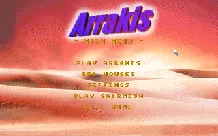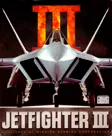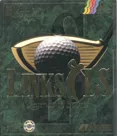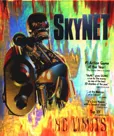Attribute Explorer
Tech-Specs > Miscellaneous Attributes > Includes Windows Launcher or Installer
16 bit DOS games, typically released in the 1990s that feature some limited Windows 3.x/9x compatibility by providing the user with a Windows installation setup or a Windows launcher executable. The game still runs in DOS without integrated emulators like DOSbox.
31 Games
| Title | Released | Platforms |
|---|---|---|
 Arrakis
Arrakis
|
2000 | DOS |
 AstroFire
AstroFire
|
1994 | DOS |
 Cendric's Quest
Cendric's Quest
|
1998 | DOS, Windows |
 Chasm: The Rift
Chasm: The Rift
|
1997 | DOS, Windows, PlayStation 5... |
 Comanche 3
Comanche 3
|
1997 | DOS |
 Duke Nukem 3D: Kill a Ton Collection
Duke Nukem 3D: Kill a Ton Collection
|
1997 | DOS |
 F-14 Fleet Defender / Fleet Defender: Scenario
F-14 Fleet Defender / Fleet Defender: Scenario
|
1998 | Linux, Windows, DOS |
 Fighter Duel
Fighter Duel
|
1995 | DOS |
 Fox Ranger 3: Last Revelation
Fox Ranger 3: Last Revelation
|
1997 | DOS |
 Horde
Horde
|
1999 | DOS, Windows |
 JetFighter III
JetFighter III
|
1997 | DOS |
 Links LS: Legends in Sports - 1997 Edition
Links LS: Legends in Sports - 1997 Edition
|
1996 | DOS |
 Lion
Lion
|
1995 | DOS |
 Mission Critical
Mission Critical
|
1995 | Linux, DOS, Windows... |
 Nemesis: The Wizardry Adventure
Nemesis: The Wizardry Adventure
|
1996 | DOS, SEGA Saturn, Windows |
 One Unit Whole Blood
One Unit Whole Blood
|
1998 | Linux, DOS, Windows |
 Project Paradise
Project Paradise
|
1997 | DOS |
 Queen: The eYe
Queen: The eYe
|
1998 | DOS |
 Realms of Arkania Trilogy
Realms of Arkania Trilogy
|
1997 | DOS, Windows, Macintosh... |
 Redneck Rampage Rides Again
Redneck Rampage Rides Again
|
1998 | DOS, Macintosh, Windows |
 Screamer Rally
Screamer Rally
|
1997 | DOS |
 SkyNET
SkyNET
|
1996 | DOS |
 Spellcross
Spellcross
|
1997 | DOS |
 Strike Base
Strike Base
|
1996 | DOS |
 Tequila & Boom Boom
Tequila & Boom Boom
|
1995 | DOS |
[
Prev
]
[ Page 1 ]
[
Next
]

